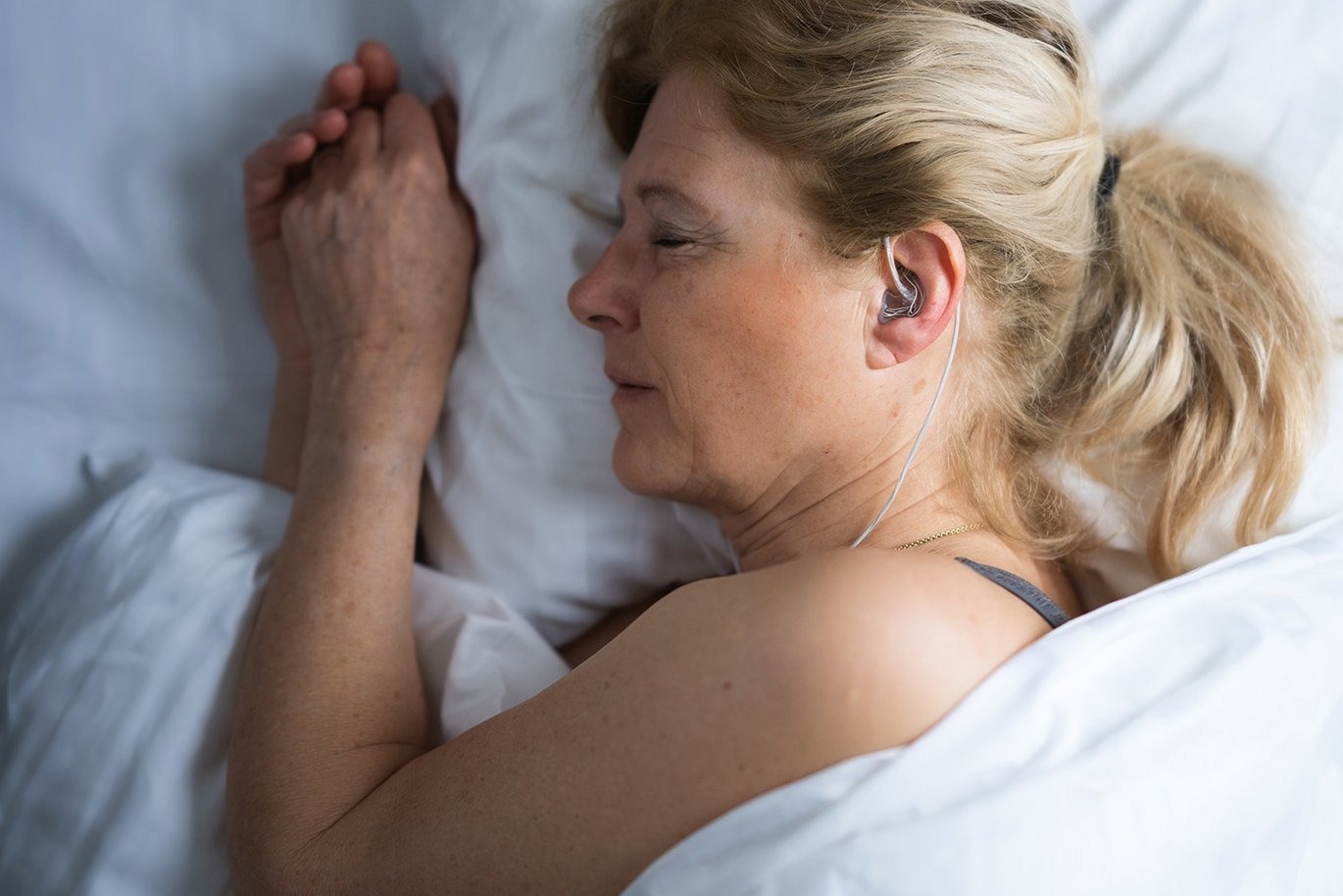Reviewed by Danielle Ellis, B.Sc.Apr 20 2023
Rigshospitalet and Aarhus University have joined forces with the Danish health technology company T&W Engineering. They have just received DKK 15 million in funding from Innovation Fund Denmark for their potentially ground-breaking project for people with serious brain diseases.

Image Credit: Aarhus Universitet / Sebastian Krog Knudsen
The project will develop and test a so-called ear-EEG device similar to a pair of in-ear headphones. This specially designed measuring device will be tested on patient groups with and without Parkinson's and Alzheimer's. The aim is to examine whether using the technology to screen patients for the two serious brain diseases is possible.
The ear-EEG technology reads the brain's electrical activity and gently maps sleep patterns. Recent research shows that a person's sleep patterns can indicate early signs of Alzheimer's and Parkinson's disease.
"Alzheimer's and Parkinson's are diseases that creep up over many years. They're usually only discovered when you start to develop cognitive and memory-related problems, sleep disturbances or disturbances in the musculoskeletal system, for example. Diagnosis is generally so late that the only treatment option is to treat the symptoms. In the project, we're going to try to identify signs of the two diseases 10-15 years before the first problems begin to occur, and if we can, far better treatment options will be possible," says Professor Preben Kidmose, who is the head of the Center for Ear-EEG at Aarhus University.
Serious brain diseases are incredibly burdensome for patients and their relatives. They are also a growing financial burden for the healthcare sector in Denmark and internationally. According to the Danish Dementia Research Centre, around 12,000 have a Parkinson's diagnosis in Denmark, while over 100,000 live with dementia. In addition, the Alzheimer's Association has estimated that just 40 percent of all Danish women with dementia have been diagnosed, while the figure for Danish men is around 60%.
Ear-EGG – the sleep monitoring of the future?
The small device is placed in the ear to measure electrical activity in the brain. The method measures the extremely small voltage changes on the skin's surface caused by electrical activity in the brain's neurons. It is a far more gentle and less intrusive technology than traditional sleep measurements.
The PANDA-project device is also equipped with an oximeter to measure oxygen in the blood, a thermometer, and a microphone that can listen to breathing and heartbeat, much like a stethoscope.
"We hope that we'll be able to use the ear-EEG to replace in part the existing and somewhat more troublesome sleep monitoring. We'll try to make the technology so simple that it can be used at home and over a longer period of time. Ideally, we hope it will be possible to measure your own sleep over a few days, weeks, or even months every year. The aim is to identify changes that may be early signs of serious brain diseases such as Alzheimer's and Parkinson's disease, and to diagnose patients more easily and earlier than today. This would be a great advantage," says Professor Poul Jørgen Jennum, Doctor of Medical Science and head of the Danish Centre Sleep Medicine at Rigshospitalet.
He continues:
"Another advantage is that we can examine patients in their everyday lives, and monitor changes in sleep patterns and the effect of treatments. This makes the potential ear-EEG technology a good screening tool that can be used at home - just like a blood pressure meter."
We must get the technology into patients' homes
The opportunity to develop home health care technology is precisely what attracts T&W Engineering. The company's specialist area is portable health technologies that provide a very accurate picture of patient's health and provide more effective patient care, preferably at home, as Richard Tøpholm, CEO of the company, explains.
"We want to support the vision of a patient-centric and data driven healthcare system, and we aim to have technological solutions in patients' homes so that they don't have to go to hospitals. Dementia is a major problem that we've been struggling with for a long time without getting very far, and the methods currently available are not scalable and not suitable for repeated measurements to trace or monitor disease progression. If we can develop solutions that involve patients in their own homes, we can begin to build up much better health profiles, so that we can assign patients for the more intrusive examinations and final diagnosis far earlier. I very much hope that we can help make a difference in this area, which means so much for so many people," he says.
Facts about the project
The project is called PANDA, which stands for "Progression Assessment in Neurodegenerative Disorders of Ageing." It will run for four years, and Innovation Fund Denmark is funding it with DKK 15 million. The total project budget is DKK 26 million. Rigshospitalet's role in the project is to perform clinical tests and collect data. T&W Engineering is responsible for integrating the various sensors into the ear-borne apparatus. Aarhus University is responsible for developing the biomarker algorithms, and T&W Engineering will develop the diagnostic support system used by clinicians.